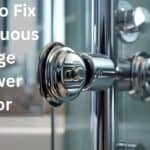
Are your wall shakes when you close your door? You may be wondering why this annoying problem occurs.
Well, this article is here to answer all your questions and provide some tips to stop it from happening. Get ready to solve this common home issue and keep your walls perfectly still.
(adsbygoogle=window.adsbygoogle||[]).push({})
| Step | Process | Factors Affecting Vibration | Solutions to Reduce Vibration |
|---|---|---|---|
| 1 | Door is closed, creating a pressure wave | Door size, door weight, force of closing | N/A |
| 2 | Pressure wave travels through air and hits the wall | Wall construction, wall attachment to building frame | Improve wall construction, secure wall to framing |
| 3 | Wall vibrates due to pressure wave | Wall construction, wall attachment to building frame | Add insulation/soundproofing materials, reinforce the wall |
| 4 | Air on the other side of the wall vibrates | Wall construction, wall attachment to building frame | Add insulation/soundproofing materials, reinforce the wall |
| 5 | Vibration is perceived as sound | Wall construction, wall attachment to building frame | Add insulation/soundproofing materials, reinforce the wall |
Table of Contents
The Impact of Wall Shaking
When a door slams shut, it can cause your home’s interior walls to vibrate or shake. This can cause potential damage and impact your home’s structural stability. Understanding why your wall shakes when a door closes is crucial in avoiding further home issues.
The wall movement that occurs when a door shuts is commonly known as wall vibration or wall oscillation. This happens because the force of the door slamming creates a disturbance in the air around it, which then transfers to the wall next to it. Depending on how solid your wall construction is, this disturbance may create a more significant tremble, resulting in a visible shake.
Repeated and forceful door-slamming consequences can even lead to structural damage over time. If left unnoticed for prolonged periods, this may result in costly repairs required to maintain the structural integrity of your building.
To prevent such situations and promote better interior design, advisable pro tips include installing soft-closing hinges with doors allowing slow-secure closure without shaking walls or replacing internal doors with sturdier, thicker ones that better absorb shockwaves.
Seismic activity? Nope, just a pesky door closing.
(adsbygoogle=window.adsbygoogle||[]).push({})
Factors Contributing to Wall Shaking
When a door is closed with too much force, it causes the surrounding walls to shake or tremble. Various structural factors and improper weight distribution within the wall support system cause this door-related wall movement. Hollow walls are more prone to shaking than solid walls due to their weaker support system.
Factors causing wall shaking also include loose wall supports and inadequate reinforcement of the structural elements. These factors weaken the wall’s stability, making it more susceptible to vibrations caused by external forces such as door impacts or even minor tremors.
Shaking walls can be prevented by addressing these structural issues, reinforcing the wall support, and ensuring proper weight distribution within the structure. Additionally, controlling the force with which doors are shut can greatly reduce door-related wall movement.
In 1933, a 6.3 magnitude earthquake struck Long Beach in California, causing significant damage to buildings and properties in the area. The quake brought attention to issues related to structural stability and building design. It highlighted the importance of proper reinforcement within buildings’ support systems to prevent seismic activity from causing similar destruction in future events.
It looks like even walls can’t handle the slamming of a door.

Common Structural Issues
It is not uncommon for households to experience wall shakes when someone closes a door. This is due to common structural issues that can arise during house construction.
The following table highlights prevalent construction weaknesses, such as inadequate wall support, weak framing, and weak connections, which may result in ordinary structural troubles affecting the overall structural integrity of a building.
| Common Structural Issues | Failing Factors |
|---|---|
| Weak Walls | Improper Framing |
| Wall Anchoring | Inadequate Support |
| Framing Problems | Poor Installation |
| Strong Winds | Faulty Construction |
A unique detail to consider is that wall shakings only highlight surface-level symptoms of underlying structural issues. These could be overlooked but may worsen over time, leading to costly repair expenses in the future.
According to a study by the National Association of Home Builders, 90% of homes built before 1980 are likely to have weak or no anchor bolts connecting their poles to their foundations.
When it comes to doors, alignment is key unless you want your house to have a wobbly, earthquake-like effect every time you shut them.
(adsbygoogle=window.adsbygoogle||[]).push({})
Door Alignment and Hardware
When a door is installed, the proper alignment and hardware are crucial to ensuring that it functions properly. Faulty door hardware, improper installation, or wear and tear over time can lead to various door alignment issues and result in shaky walls when doors close.
To fix such problems, follow these six steps:
- Inspect the door apparatus: Begin by assessing the hinges and latches to determine whether both components are working correctly.
- Check door orientation: Verify that the door aligns with its frame. Misaligned doors can cause shifting or unbalanced pressure on neighbouring walls.
- Tightening loose screws: Loose screws in hinges or latches can cause faulty alignment. Gently tightening them may restore functionality.
- Replace worn-out components: Worn-out hinges or latches must be swapped for new ones to maintain the proper operation of doors.
- Adjust striking plate position: When repositioning the striker plate, consider positioning the plate slightly inward from where it previously was located, as this may aid in correcting slight frame misalignment.
- If none of these solutions works, you may need to consider professional assistance from a skilled technician well-versed in fixing door components and door latch problems.
While addressing its main problematic areas can cure many misalignment issues affecting doors, periodic maintenance is also essential. You ought to carry out common sense practices such as keeping your door well lubricated to help keep all parts moving smoothly.
Lastly, for better results, the best bet is to hire a reputable contractor familiar with doorway alignment issues and appreciate how they can remedy each of those challenges on time before much damage occurs.
When it comes to air pressure and drafts, remember: Mother Nature loves messing with our door-closing game.
Air Pressure and Drafts
The sensation of a wall-shaking when a door closes is commonly caused by air pressure and drafts within the home. Air movement creates air currents that result in pressure changes throughout the property. When doors close, they can create an airflow disturbance that triggers fluctuations in air pressure, leading to wall shaking.
This phenomenon typically occurs due to ventilation imbalance or home drafts. Reduced ventilation can exacerbate air pressure variation, causing increased intensity in wall shaking. Moreover, poor airflow can lead to gaps around the edges of doors and windows that enable drafts to leak into the home. You may reduce this effect by undertaking necessary measures, such as installing a door draft stopper or sealing any gaps contributing to air leaks.
It is important to note that similar phenomena have been observed since ancient times, where structures were designed with small openings at either end, allowing air circulation, thus reducing excess air pressure buildup within them.
I tried soundproofing my apartment, but it still sounds like my neighbour is practising for a heavy metal concert.
(adsbygoogle=window.adsbygoogle||[]).push({})
Soundproofing and Vibration Dampening Solutions
Various solutions are available for controlling noise and vibrations, from insulation materials to anti-vibration pads. Here are some practical soundproofing and vibration-dampening techniques that can help:
- Acoustic Insulation – Using acoustic insulation on walls helps block airborne noise and reduces echoes by absorbing sound waves that bounce back.
- Vibration Absorbing Materials – These materials absorb the energy caused by vibrations, reducing noise levels. Some examples include specialized mats or foam.
- Anti-Vibration Pads – Placing these pads beneath objects like washing machines or speakers helps to reduce noise and vibrations.
- Soundproofing Techniques for Walls – Commonly-used techniques like double-layered drywall and green glue between walls create an extra layer of protection against unwanted noise.
- Sound Dampening – This involves using heavy curtains or damping compounds sprayed onto surfaces to reduce sound transmission through walls or floors.
In addition to these solutions, specialists may offer unique approaches depending on the space’s specific needs. For example, they could recommend underfloor insulation for noisy spaces above a basement. Whatever the need, it’s essential to consult with a professional.
If you’re looking to dampen your home’s vibrations, make sure to evaluate your space closely. Factors like flooring type or nearby sources of vibration can cause issues. Additionally, consider carefully which solution would work best for your specific requirements, as each technique has its strengths when it comes to reducing unwanted sounds and feelings of vibration.

Preventive Measures
To prevent wall shaking when a door closes, homeowners can take several preventive steps. One of the most important preventive steps is regular maintenance and inspection of both the door and wall. This can help to identify potential issues early on and allow for preemptive actions.
Additionally, using door stops or soft-close door hinges can provide an added layer of protection against wall shaking caused by slamming doors. Proper door upkeep, including adjusting hinges as needed, can also help minimise wall damage over time.
To avoid wall damage altogether, homeowners should consider implementing preventative strategies such as avoiding unnecessary force when closing doors, especially those leading to heavy traffic areas. Careful use of slam preventers can effectively minimise the impact of forcefully closed doors.
Regular wall maintenance routines, such as patching holes and repairing cracks as they appear, is essential to ensuring long-term structural integrity. Following these preventive steps is crucial in maintaining a healthy home environment free from unsightly wall damage caused by slamming doors.
The only expert insight I need is why my wall shakes every time my neighbour slams their door like they’re auditioning for a horror movie.
(adsbygoogle=window.adsbygoogle||[]).push({})
Expert Insights: Industry Professionals Weigh In
Professional Recommendations for Understanding Wall Shaking
Industry professionals, including architects, engineers, building inspectors and construction experts, have provided knowledgeable insight into why walls shake when doors close. According to their expert opinions, this phenomenon occurs due to pressure changes caused by the sudden release of air when a door is shut. These pressure changes can cause vibrations that travel through the structure of the building and cause the walls to shake.
To prevent wall shaking, architects and construction experts recommend that doors are sealed and hung correctly. Additionally, using materials with greater flexibility in construction can absorb vibrations caused by door closure and reduce the impact on building structures.
In addition to these recommendations, it’s important to note that different factors can affect a building’s stability and contribute to wall shaking. For example, seismic activity or foundation settlement may also cause walls to shake. In such cases, it is best to consult with professionals for expert guidance regarding specific solutions for these problems.
Pro Tip: Regular maintenance of a building’s structure is essential for preventing wall shaking caused by routine wear and tear over time.
Keeping your home cozy and secure is like balancing a stack of Jenga blocks – one wrong move and it all comes crashing down.
| No. | Known Fact | Description | Potential Solution/Consideration |
|---|---|---|---|
| 1 | Resonance | Intense wall vibration when pressure wave frequency matches wall’s natural frequency | Consider resonance when designing walls/materials |
| 2 | Sound Transmission Class (STC) | Rating system measuring effectiveness in reducing airborne sound transmission | Use walls with higher STC ratings |
| 3 | Door Type | Solid-core doors produce less noise than hollow-core doors | Opt for solid-core doors |
| 4 | Door Seals | Reduce air escape and intensity of pressure wave | Install door seals/weatherstripping |
| 5 | Soft-Close Mechanisms | Control closing speed and force, reducing pressure wave impact | Install soft-close mechanisms on doors |
| 6 | Acoustic Panels | Absorb and dissipate sound waves | Place acoustic panels on walls |
| 7 | Room Layout | Furniture and object arrangement influences sound wave travel and perception | Strategically place sound-absorbing materials |
Maintaining a Stable and Comfortable Living Environment
Maintaining a secure and cozy dwelling while ensuring the safety of your household is crucial. The stability of walls and doors is vital for providing comfortable living conditions and harmonious surroundings.
The secure walls ensure stability, keeping the living space safe and secure. Properly functioning doors play an essential role in maintaining a stable home environment. Therefore, it’s crucial to pay attention to door-closing habits to avoid wall shakes or damage.
You can enjoy stable and secure living spaces with your loved ones by taking care of your well-built interiors. Ensuring proper maintenance of doors and walls helps avoid unnecessary expenses in repairs or replacements.
A true fact: According to the National Council for Home Safety and Security, burglars often target homes with weak points, such as insecure walls or faulty doors.
(adsbygoogle=window.adsbygoogle||[]).push({})
Preventing Wall Vibrations: The Ultimate Solution to Shaky Walls When Doors Close
Understanding the root causes of wall-shaking when doors close is crucial in order to find effective solutions. Factors such as door slamming, loose wall fasteners, and structural issues can all contribute to this annoying problem.
You can ensure a peaceful and serene living space free from wall vibrations by implementing various preventative measures, such as installing soft-close door hinges, tightening wall fasteners, and addressing structural concerns.
Remember, timely maintenance and proactive solutions are the key to a stable and secure home.
Say goodbye to shaky walls for good by following our expert advice on this matter.
Frequently Asked Questions
Why does my wall shake when I close the door?
This is a common issue in homes and buildings. The shaking could be caused by a sudden change in air pressure resulting from the door slamming. The vibration then transfers to the wall and causes it to shake.
Is this something to be concerned about?
In most cases, no. The shaking may be slightly annoying, but it does not usually indicate any structural issues. However, if the shaking seems excessive or you notice any other signs of damage, you may want to consult a professional.
Can I prevent my wall from shaking?
You can try a few things to minimize the shaking. One option is to install weatherstripping or a door sweep on the door to reduce the force of the slam. You can also install rubber bumpers on the door frame to cushion the impact.
Could faulty construction cause the shaking?
It is possible that the shaking is a result of poor construction or installation. If you suspect this is the case, you may want to have a contractor or inspector take a look.
Can the shaking cause damage over time?
It is unlikely that the shaking will cause significant damage over time, but it is possible that it could loosen screws or cause small cracks in the wall. Monitoring the shaking and addressing any issues that may arise is always a good idea.
(adsbygoogle=window.adsbygoogle||[]).push({})
Related Articles:

Are French Doors Better Than Sliding Patio Doors?
Are French Doors Better Than Sliding Patio Doors? It depends on your specific needs when it comes to deciding between French and sliding patio doors. Sliding patio doors are typically more energy-efficient, as they use insulated glass packs and frames. However, French…

French Door Options: Which One is Right for You?
French Door Options: Which One is Right for You? French doors have been growing in popularity for home improvement projects. Their allure lies in their exquisite design and the ability to let light filter into a space more cleanly than other door types, contributing…
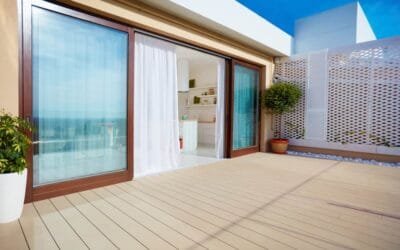
uPVC or Vinyl Doors
uPVC or Vinyl DoorsWith so many building products on the market, the choice is endless. Have you considered uPVC? uPVC is exceptionally light and easy to work with. It is for this reason mainly that builders choose to use this door material. There are various colours…
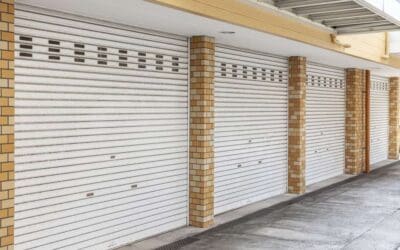
Roller Doors
Roller DoorsA roller door is an ideal solution if you are looking for a high security door for an external area of your property. Ideal for garage space or for keeping your objects in a shed or a warehouse, not only is it secure; it occupies only a short amount of…

Mirrored Doors
Mirrored DoorsOften when you think of mirrored doors, you immediately think of sliding wardrobe doors. But a mirrored door can be so much more. This type of door material is very stylish because the mirror offers a timeless effect. The lasting impact of a mirror will…
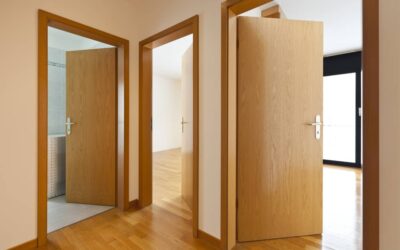
Hollow Core Doors
Hollow Core DoorsFor as long as we can remember, hollow core doors have been the traditional standard doors for most average households. Because of their lightweight composition, they are generally only used inside the house as harsh weather from the outside could do…
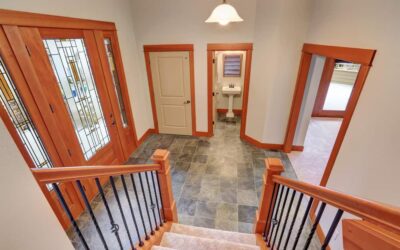
Leadlight Doors and Stained Glass Doors
Leadlight Doors and Stained Glass Doors The eyes are the windows to a person’s soul. Likewise, a door is the first thing someone will see when they visit your home. So naturally, you want to make it look inviting and attractive. What better way to do that than to have…
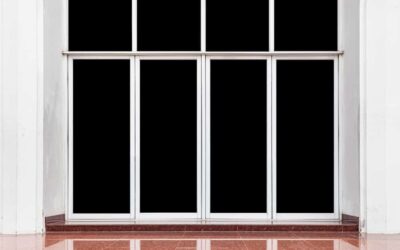
Aluminium Doors
Aluminium Doors After the roof on the top of your house, doors are the next most crucial piece of the building puzzle. Think about it for a minute. While a roof provides shelter, a door offers you protection from the outside world. A solid, secure door will not only…
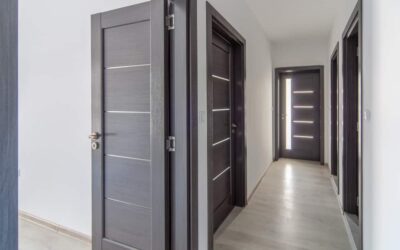
Fibreglass Doors
Fibreglass is a durable and robust door material. While both steel and wooden doors need some degree of maintenance, a fibreglass door needs so much less. That makes fibreglass doors a great option when it comes to choosing a new door for your home or office. It…
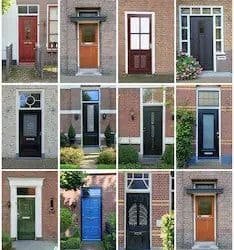
Dutch or Stable Doors
Dutch or Stable Doors If you’re looking for uniqueness than this popular Holland styled door is an excellent opportunity to add a unique touch and personality to your house. A Dutch or stable door is a perfect addition to a rustic style house or Ranch design. These…
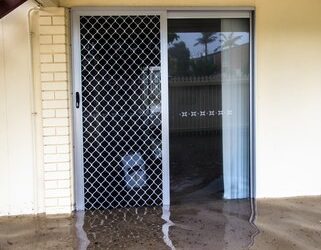
Security Screen Doors
Security Screen Doors There are plenty of options to keep your house and family safe and sound. A great start is a security screen door. Thanks to advanced technology, it’s easier than ever to have a good security system. Security doors not only give you extra…
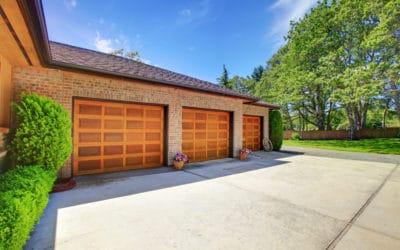
Tilt Doors
Tilt Doors A tilt door can be an excellent solution for your garage, carport, or shed. Very easy to use and convenient, this could be a very good investment for your house. Whether if it’s to park your car or put away some personal belongings, tilt doors can be the…
Message Us
Get In touch below. Ask Any Question or Start a Free Quote
Call Us
1800 491 492

I’m James Davis, a carpenter with eight years of experience in carpentry services, repairs, installations, renovations, and maintenance of interior doors. I have a diploma in carpentry and joiner trade from the Education Skills Australia Institute and take pride in delivering high-quality results to ensure customer satisfaction. I’m a blog writer for Octopus Doors Company and enjoy sharing my knowledge and tips on maintaining security measures and choosing the right door materials, paints, or handle styles. I specialize in custom-made interior doors and strive to make every home look fabulous. Contact me anytime for help with door-related issues.

